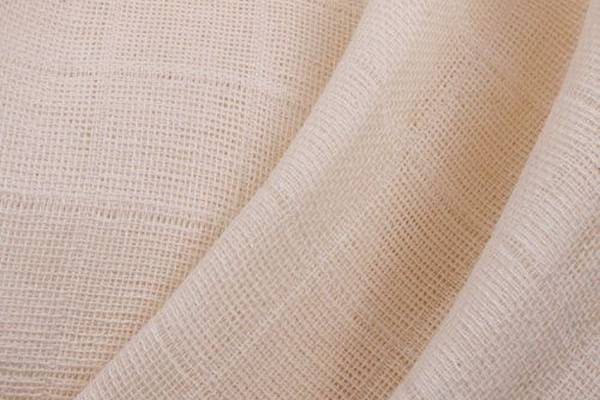How To Use A Muslin Mockup When Creating Sewing Patterns
When it comes to choosing the right fabric for your sewing project, it's important to consider factors like the fabric's durability, comfort, and texture. One fabric that has become popular among sewing enthusiasts is muslin fabric. In this post, we're going to take a closer look at muslin fabric and provide you with some essential tips and tricks for using it in your sewing projects.

How to Use Muslin Fabric Properly
Before we dive into the many uses of muslin fabric, let's first discuss how to use it properly. One of the biggest concerns people have when it comes to muslin is whether it frays and pills easily. The answer is yes, it does. However, this doesn't mean you should avoid using muslin altogether. Instead, there are a few things you can do to prevent these issues.
Firstly, be sure to finish the raw edges of your muslin fabric by either serging or using a zigzag stitch. This will help prevent fraying. Secondly, avoid washing your muslin fabric too frequently or with harsh detergents. This can cause pilling and weaken the fabric fibers. Finally, consider using a lower thread count muslin fabric. Higher thread count fabrics tend to be more prone to fraying and pilling.
Now that we've covered the basics of working with muslin fabric, let's explore some of its many uses.
Uses for Muslin Fabric
1. Mockups and Prototypes
One of the most popular uses for muslin fabric is creating mockups and prototypes for clothing designs. Muslin fabric is relatively inexpensive and easy to work with, making it the perfect choice for creating rough drafts of your designs. Plus, since muslin is lightweight and breathable, it allows you to get a sense of how the final garment will fit without weighing you down.
2. Pattern Making
In addition to mockups and prototypes, muslin fabric is also great for creating patterns. By tracing your design onto muslin fabric, you can create a durable and reusable pattern that can be used again and again without tearing or fraying. Plus, since muslin is see-through, it's easy to trace your design accurately.
3. Linings
Another common use for muslin fabric is as a lining for clothing and accessories. Muslin's lightweight and breathable nature make it ideal for lining jackets, dresses, and even bags. Plus, since muslin comes in a variety of thread counts and textures, you can choose one that complements your main fabric for a cohesive look.
4. Quilting and Crafts
Muslin fabric is also great for quilting and a variety of other crafts. Its lightweight and breathable nature make it perfect for creating soft toys, stuffed animals, and other textile-based projects. Plus, since muslin is often white or cream in color, it's easy to dye or paint for a more personalized look.
Tips and Tricks for Using Muslin Fabric
1. Pre-Wash Your Muslin Fabric
Before using muslin fabric in your sewing project, be sure to pre-wash it in warm water with a mild detergent. This will help remove any excess sizing or chemicals and prevent shrinkage later on. Plus, since muslin tends to soften with each wash, pre-washing can actually improve the texture and feel of the fabric.
2. Use Muslin as a Pressing Cloth
If you're working with delicate or light-colored fabrics, consider using muslin as a pressing cloth. Simply place a layer of muslin between your iron and the fabric to protect it from scorch marks and other damage. Plus, since muslin is see-through, it allows you to see your fabric as you press it.
3. Experiment with Different Thread Counts
As we mentioned earlier, muslin fabric comes in a variety of thread counts and textures. Experimenting with different options can help you achieve different effects in your sewing projects. For example, a lower thread count muslin may be perfect for lining a lightweight jacket, while a higher thread count may be better suited for a dress or skirt.
4. Don't Be Afraid to Dye or Paint Muslin
While muslin fabric is often white or cream in color, it's actually quite easy to dye or paint. Consider using fabric dyes or textile paints to add a pop of color to your muslin fabric before you begin sewing. This can help you create a truly unique and personalized piece.
5. Use Muslin to Test Your Sewing Machine
Finally, if you're having trouble with your sewing machine, consider using muslin fabric to test it out. Since muslin is lightweight and easy to work with, it can help you diagnose any issues with your machine without wasting expensive fabric or thread. Plus, since muslin is relatively inexpensive, you can afford to make multiple test pieces until you get the hang of it.
Conclusion
As you can see, muslin fabric is a versatile material that can be used for a variety of sewing and crafting projects. Whether you're creating mockups and prototypes or adding a lining to a jacket, muslin is an affordable and durable choice. By following our tips and tricks for working with muslin fabric, you can make the most of this versatile material and create beautiful, long-lasting designs.





Post a Comment for "How To Use A Muslin Mockup When Creating Sewing Patterns"